Today I’m doing an in-depth teardown of a real pitch deck from Goodlawyer, a legal marketplace for founders (disclosure: I am a customer).
I’m really grateful to Brett, the founder/CEO, for agreeing to do this. My goal is to help Goodlawyer tell a better story, i.e. their story, using a practical and constructive approach.
As a thank you and a fun challenge, in my next post I’ll be creating a new pitch deck for Goodlawyer including a professional design. I’m calling it: Pitch Deck Makeover. I’ll be handing over all the source materials and design to them. If you want to be my next teardown just send me your pitch deck.
My teardowns are about understanding the craft of pitching, not giving advice on what I think VCs want to hear. I don’t believe in top 10 lists or shortcuts, but I do believe that all entrepreneurs are capable of telling a great story. Let’s get started!
Key points I cover
- What I liked
- What could be improved
- Part 1: Breaking down how the story flows
- Part 2: How to talk about a 2-sided market
- Part 3: The full slide deck with my comments
If you like this Pitch Teardown and are interested in pitching and founder storytelling, please subscribe to a Leap of Faith!
What I liked
👇 Scroll down if you want to read the full slide deck first.
I liked their intelligence and confidence. There’s obviously a ton of knowledge and expertise inside Goodlawyer and this comes through. They use outside research frequently and they’ve done good analysis. It’s almost like they think like lawyers…
Their traction is strong for their stage: thousands of paying clients, hundreds of lawyers and millions of dollars worth of transactions. There’s a lot of substance to the Goodlawyer story.
What could be improved
A live presentation would be more engaging, but the slides come across as a lecture. I felt I was being educated which is not the feeling you want to have. It’s overly logical and the charts often distract from the main points.
This deck needs a stronger point of view. It’s professional but it doesn’t communicate enough of a big, audacious dream. Knowing the company, I know there is a huge vision. It just needs to come out more.
This blandness also applies to the design. It’s standard fonts and colours on a white background. Not offensive but not memorable either. Always go for memorable.
Part 1: Breaking down how the story flows
Their story flow
Goodlawyer made my job easier by having headlines that read like sentences. I extracted those in the diagram below so I could read them as an elevator pitch. This is a good technique for evaluating story flow. If it feels off when you read it, it probably is.
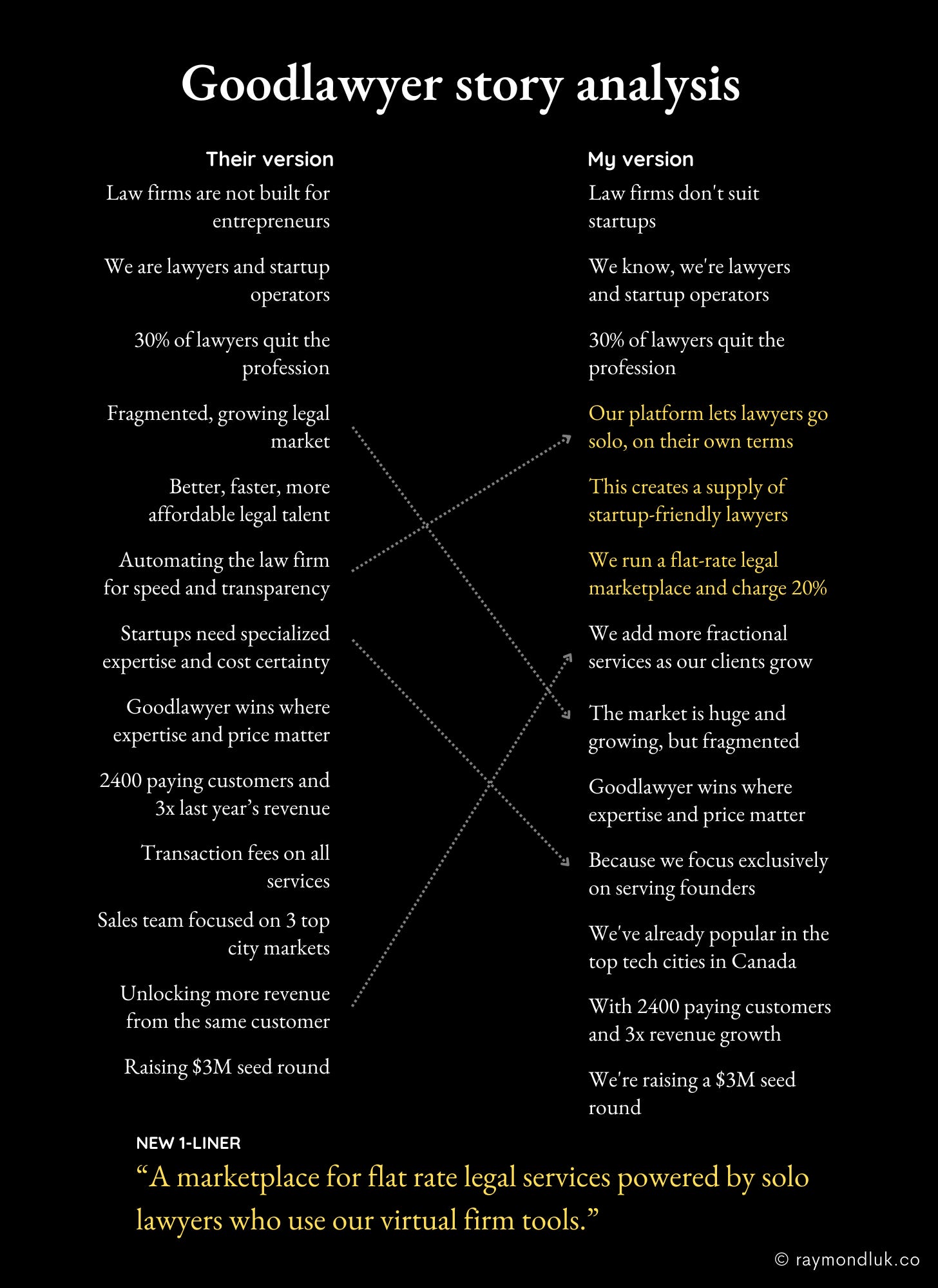
They aren’t missing any key slides. But when you read the left-hand column, it feels disjointed. Each sentence makes sense on its own but it doesn’t hold together as a paragraph. It lacks a focal point.
It’s hard to know exactly what Goodlawyer does from the headlines, and that’s a problem. The point of a pitch is to make big, interesting points that capture the imagination. This feels more like a series of lecture notes.
New story flow
In the right-hand column, I simplified the headlines to get to what I thought was the core. I changed the order of a few slides but otherwise stuck with what they had.
I highlighted in yellow what I think is the essence of what they do:
- Build digital tools to help lawyers go solo
- Use those lawyers to fulfill flat-rate legal services for startups
- Charge a 20% fee, add more services later
By the way, this might not be Goodlawyer’s actual strategy. I’m making assumptions based on their deck and what I (think I) know about the company. It’s up to them to decide what is essential to their story.
What I’m trying to do is show how much better it is when you have a clear focus and you support it with every single part of your story.
Here’s the full paragraph/elevator pitch:
Law firms don’t suit startups. We know, we’re lawyers and startup operators. 30% of lawyers quit the profession. Our platform lets them go solo, on their own terms. This creates a supply of startup-friendly lawyers who use our marketplace to sell flat-rate services. We charge 20%. We’ll add more fractional services as they grow and this market is huge and growing, but fragmented. Goodlawyer wins where expertise and price matter because we focus exclusively on founders. We’re already popular in top tech cities in Canada with over 2400 paying clients and 3x revenue growth. We’re raising a $3M seed round to expand.
A 1-liner would be:
“A marketplace for flat rate legal services powered by solo lawyers who use our virtual firm tools.”
Neither is good marketing copy but they tell a clearer story than what they had originally.
The most difficult part of storytelling is leaving things out. That’s easy for me because I literally do not know much about them. But the important skill to develop is pulling back from giving the audience everything. Make them do a little work.
Part 2: How to talk about a 2-sided market
It’s tough to talk about a 2-sided marketplace. Picking one side feels like you’re hiding part of the story. Balancing both sides can easily become a lecture on marketplace mechanics, not a pitch to invest in a startup!
I definitely feel indecisiveness in Goodlawyer’s pitch deck. It’s why their story feels disjointed. It’s also probably why they felt the need to put in so many charts and graphs. Once your goal is to tell a complete story it’s hard to say no to one more piece of information.
Three ways to tell a marketplace story
I created three versions of the Goodlawyer story to show how they could tell essentially the same story with a slightly different focus:
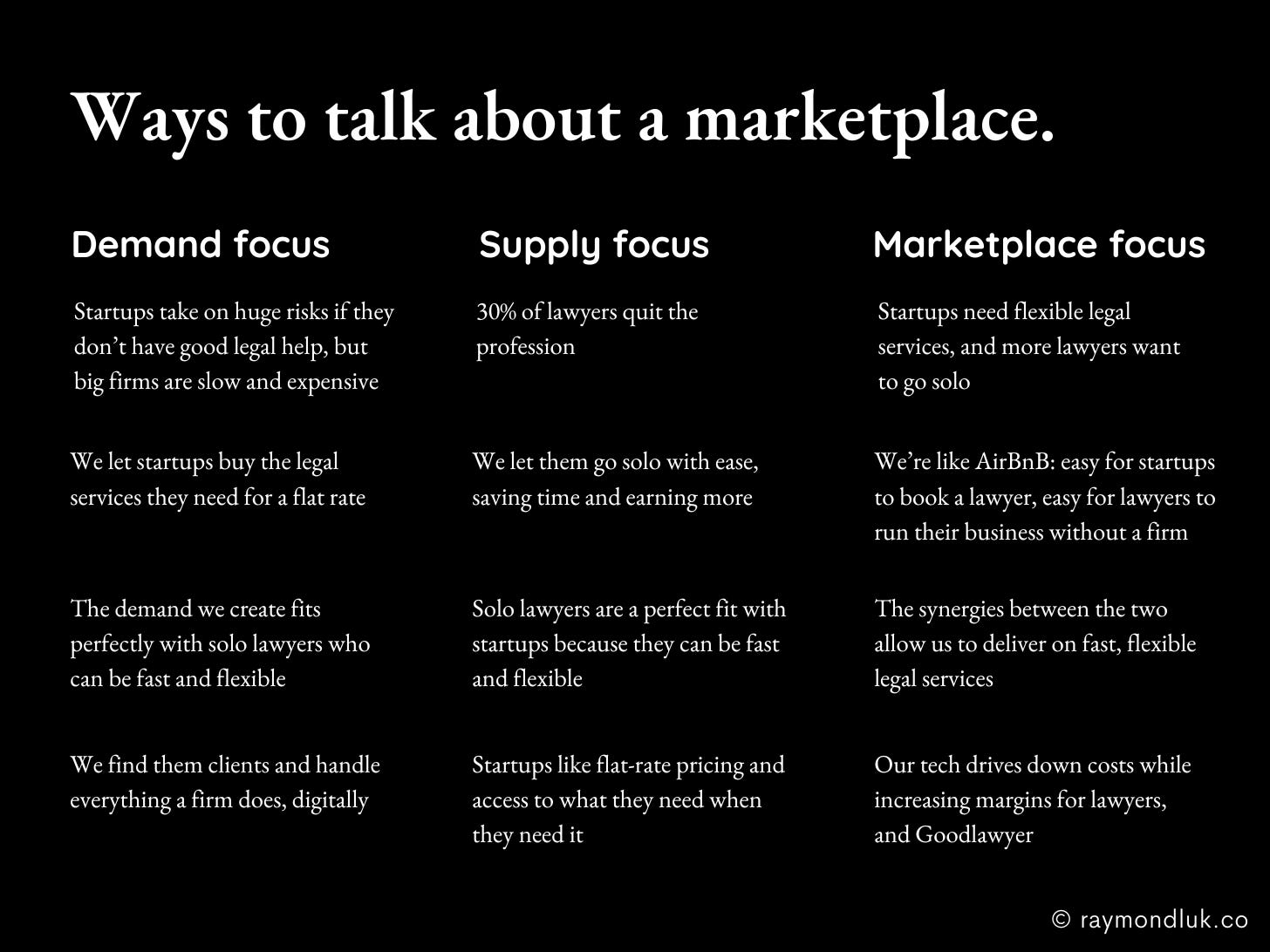
Both demand side and supply side stories can end up at the same place. They’re somewhat interchangeable, but it depends on which side of the story they feel is stronger. Not everyone is sympathetic to lawyers’ problems, for example.
Of the three approaches, balancing both sides is the hardest. But it can definitely work if you can avoid over-explaining the mechanics. And this might be the best approach for a startup like Goodlawyer who already has traction.
How this affects your slides
After you pick an approach (supply, demand, both) it’s important that the rest of the slides in the pitch deck have the same focus. It’s confusing if you switch sides every other slide, which Goodlawyer did sometimes.
Here is table showing how 5 key slides would answer different questions depending on how you wanted to tell your marketplace story:
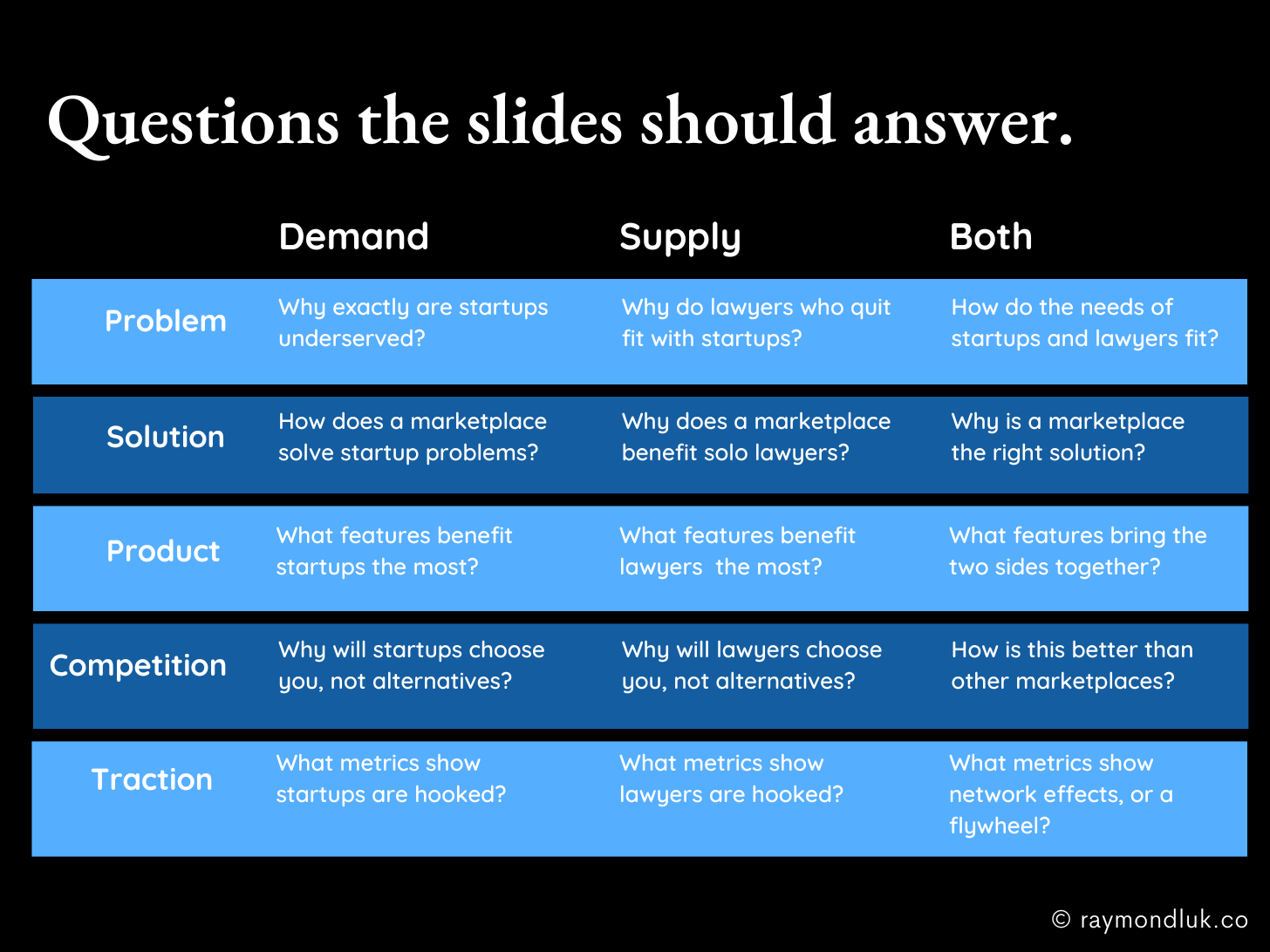
No matter what option Goodlawyer picks, the most important thing is not to switch and not to aim for completeness. That’s the only option that is guaranteed to fail.
Part 3: Slide walkthrough
Here is the complete slide deck along with my comments. Some of these are quite minor. I feel that if Goodlawyer refocused their story based on the analysis above, many of these things would probably be solved.
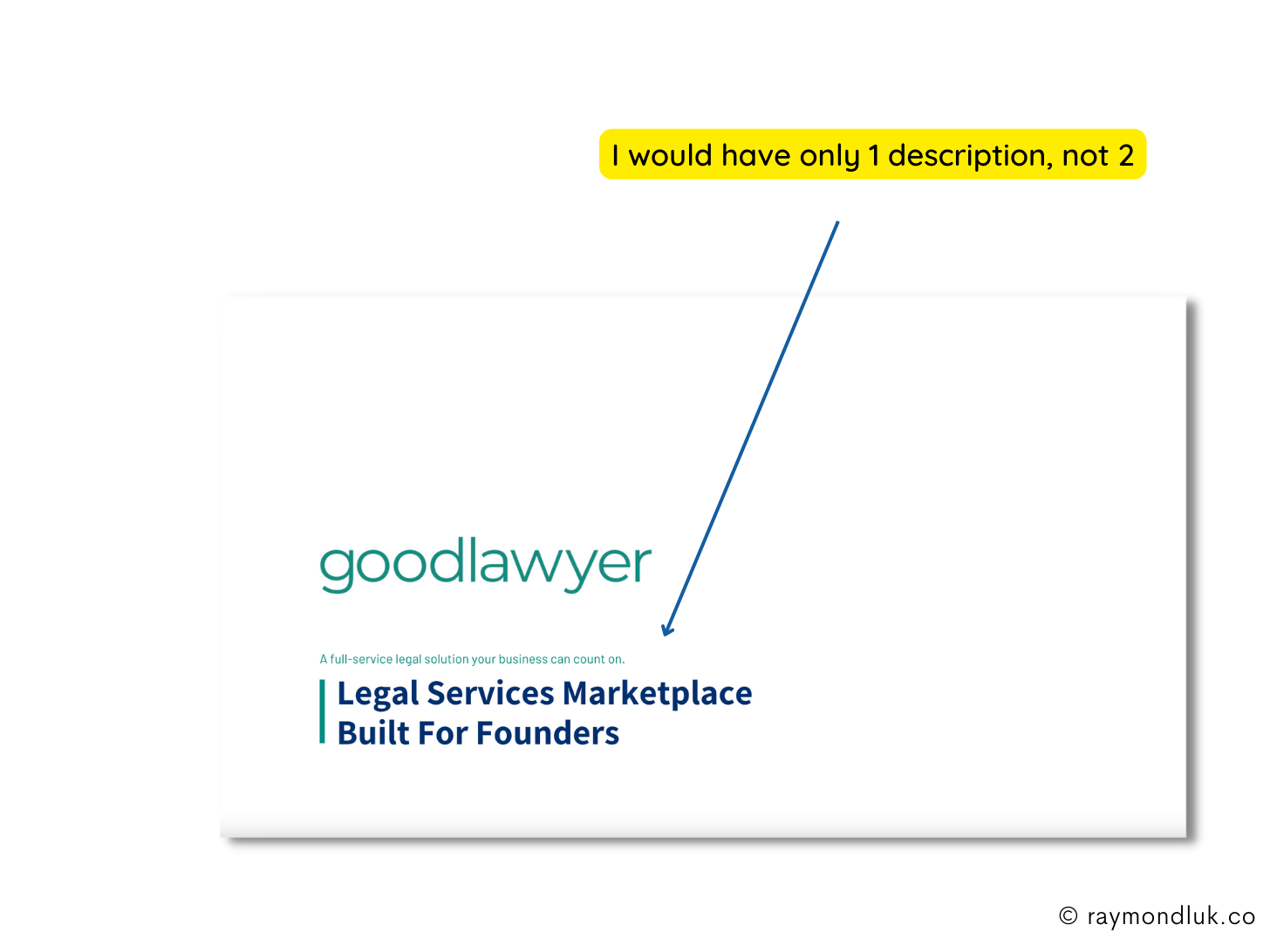
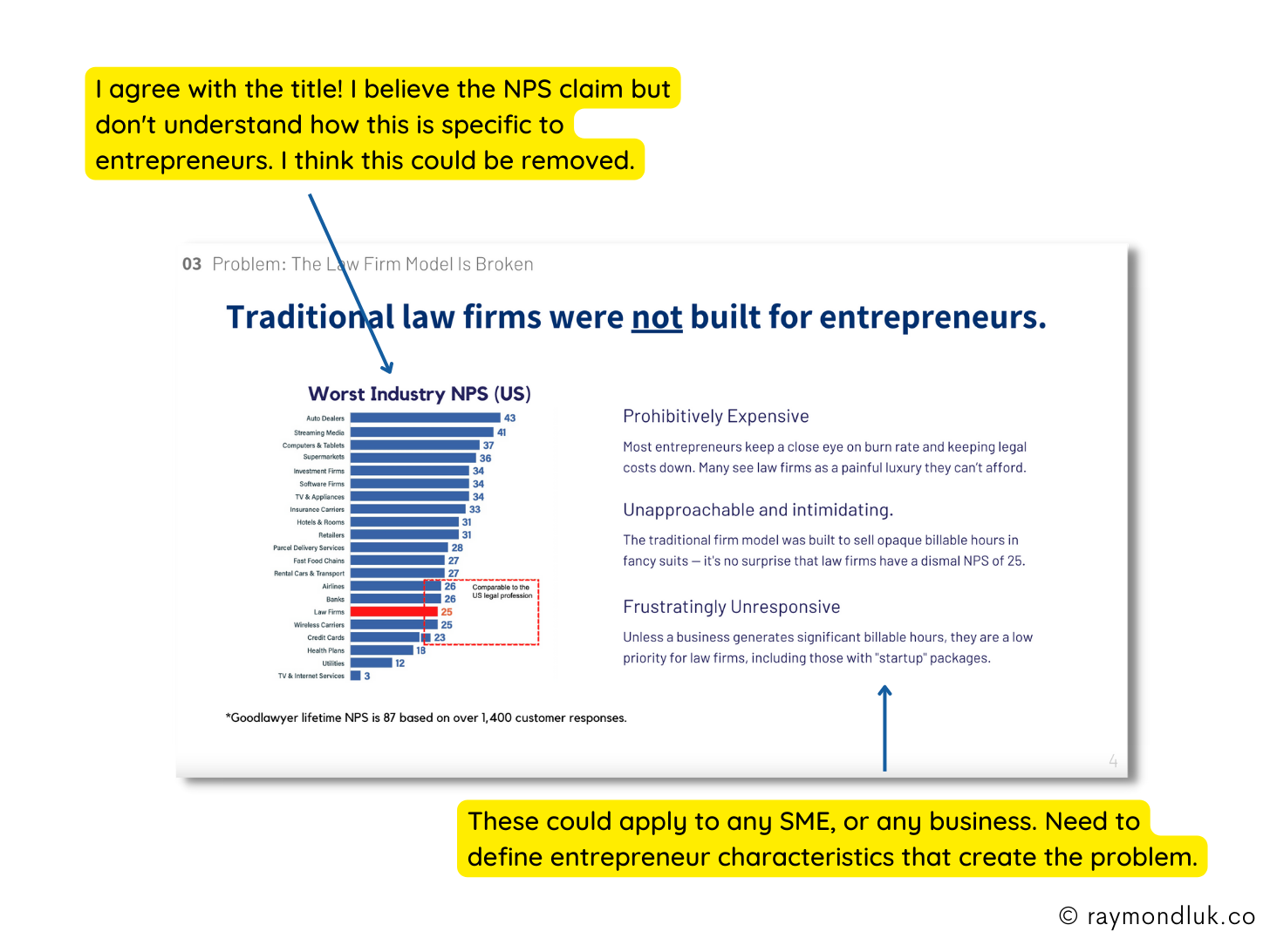
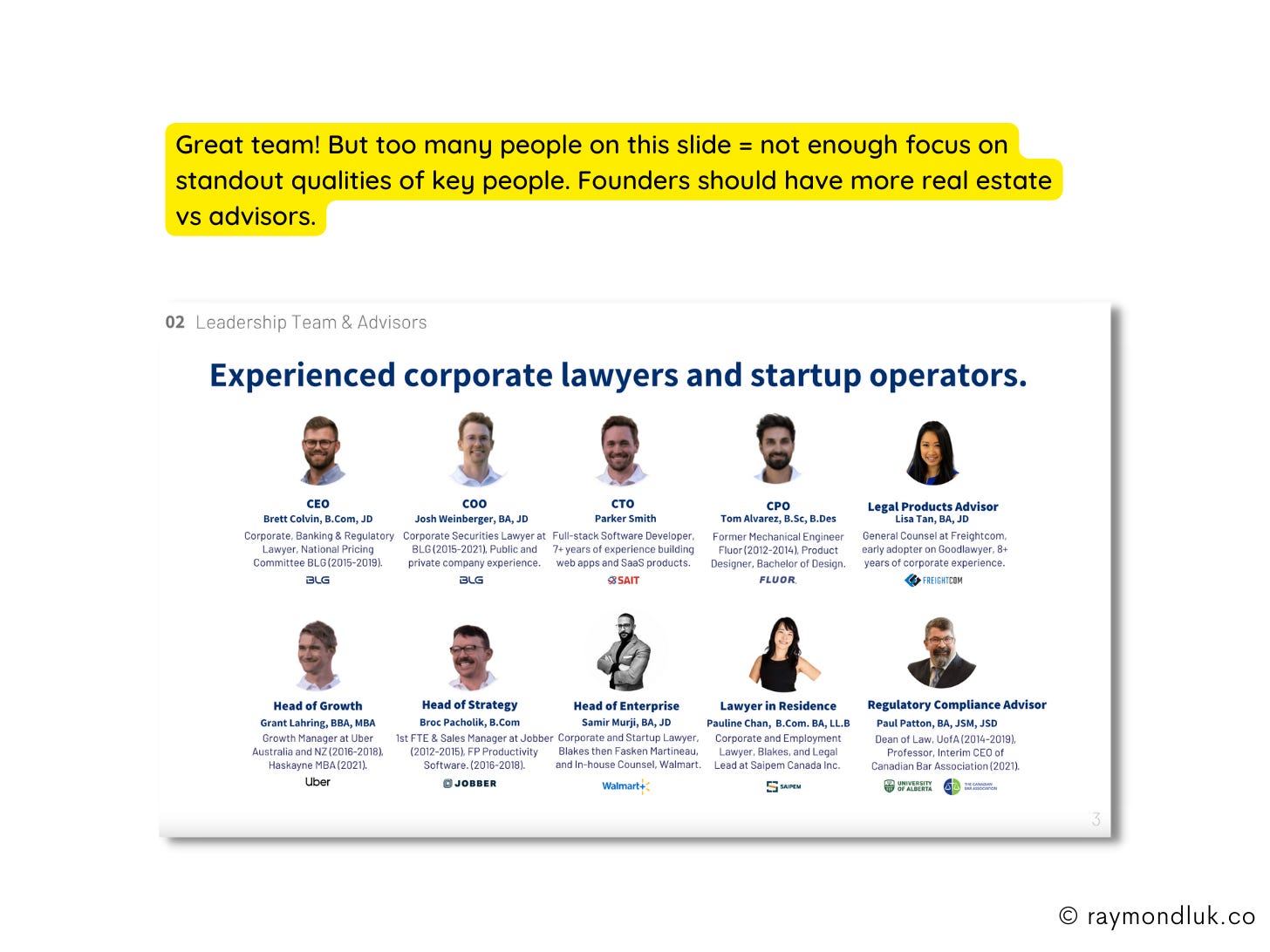
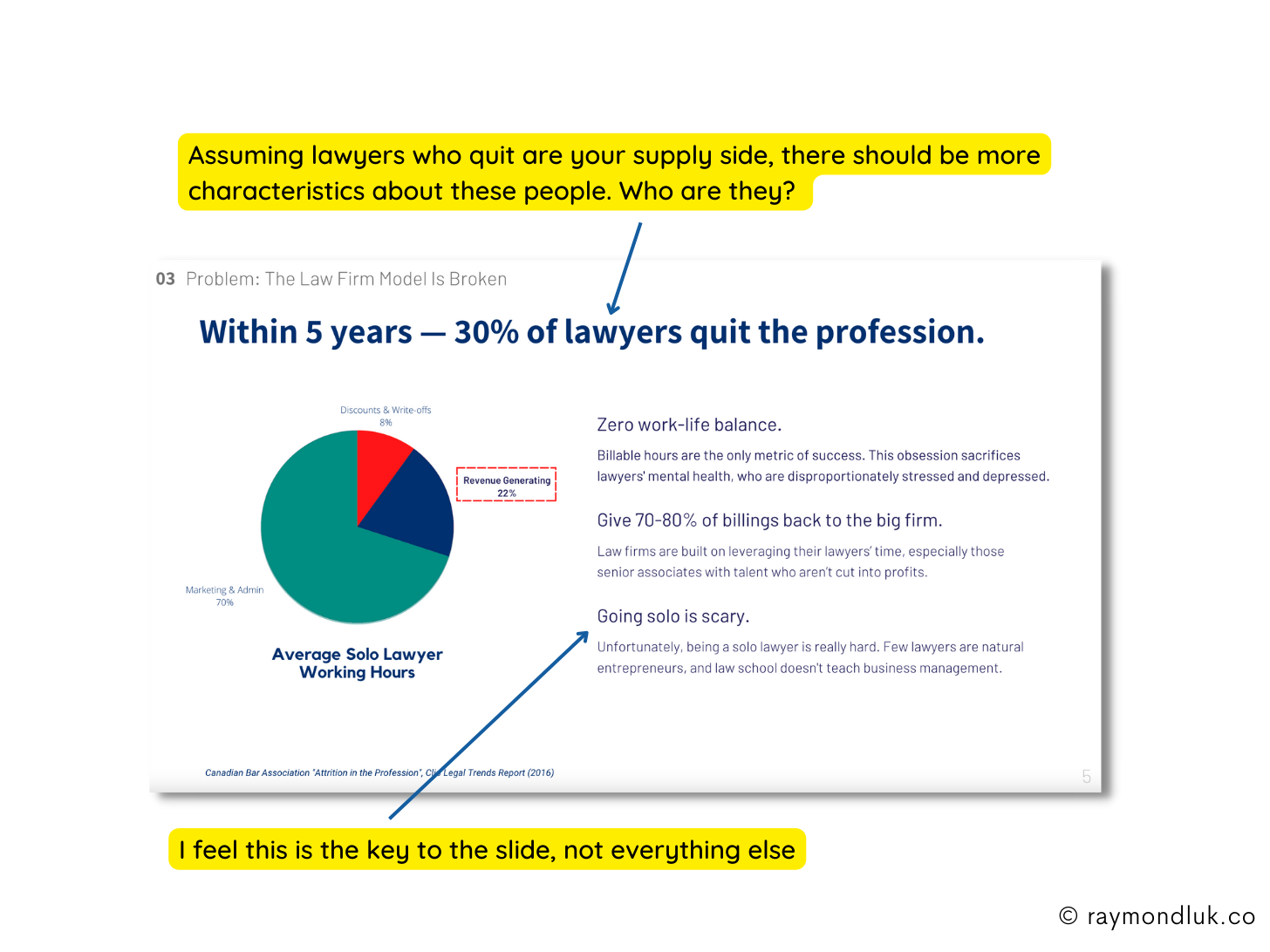
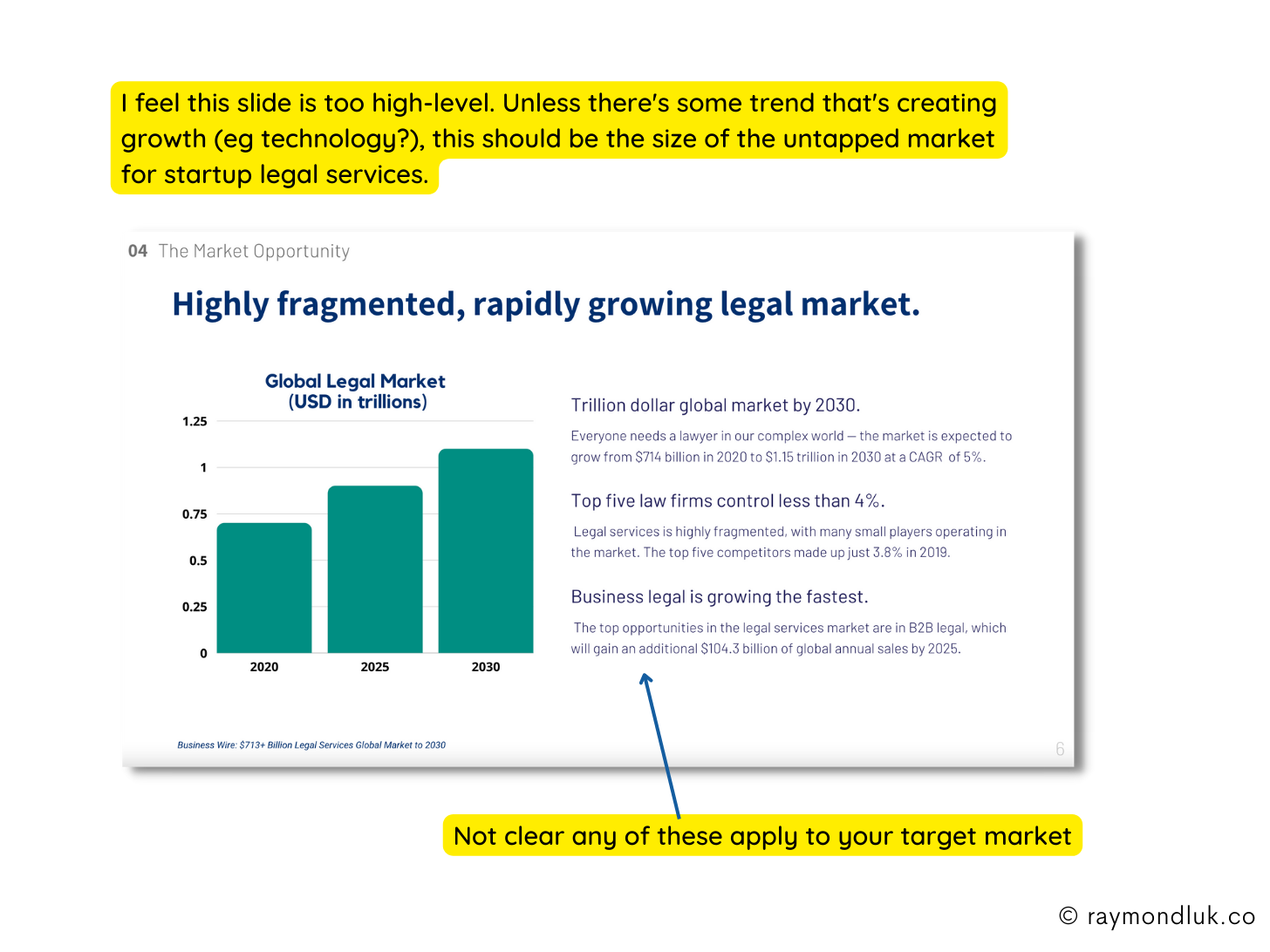
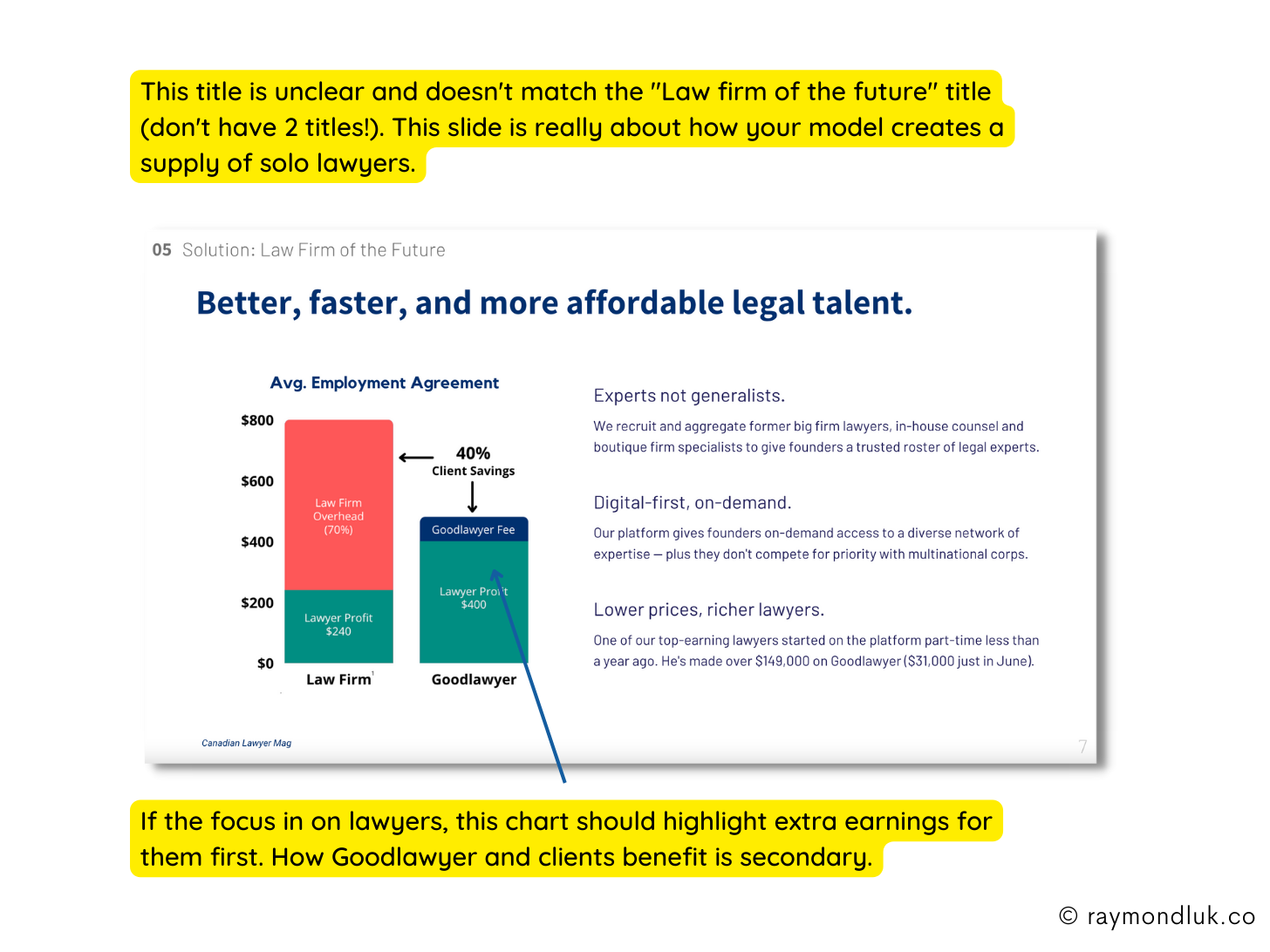
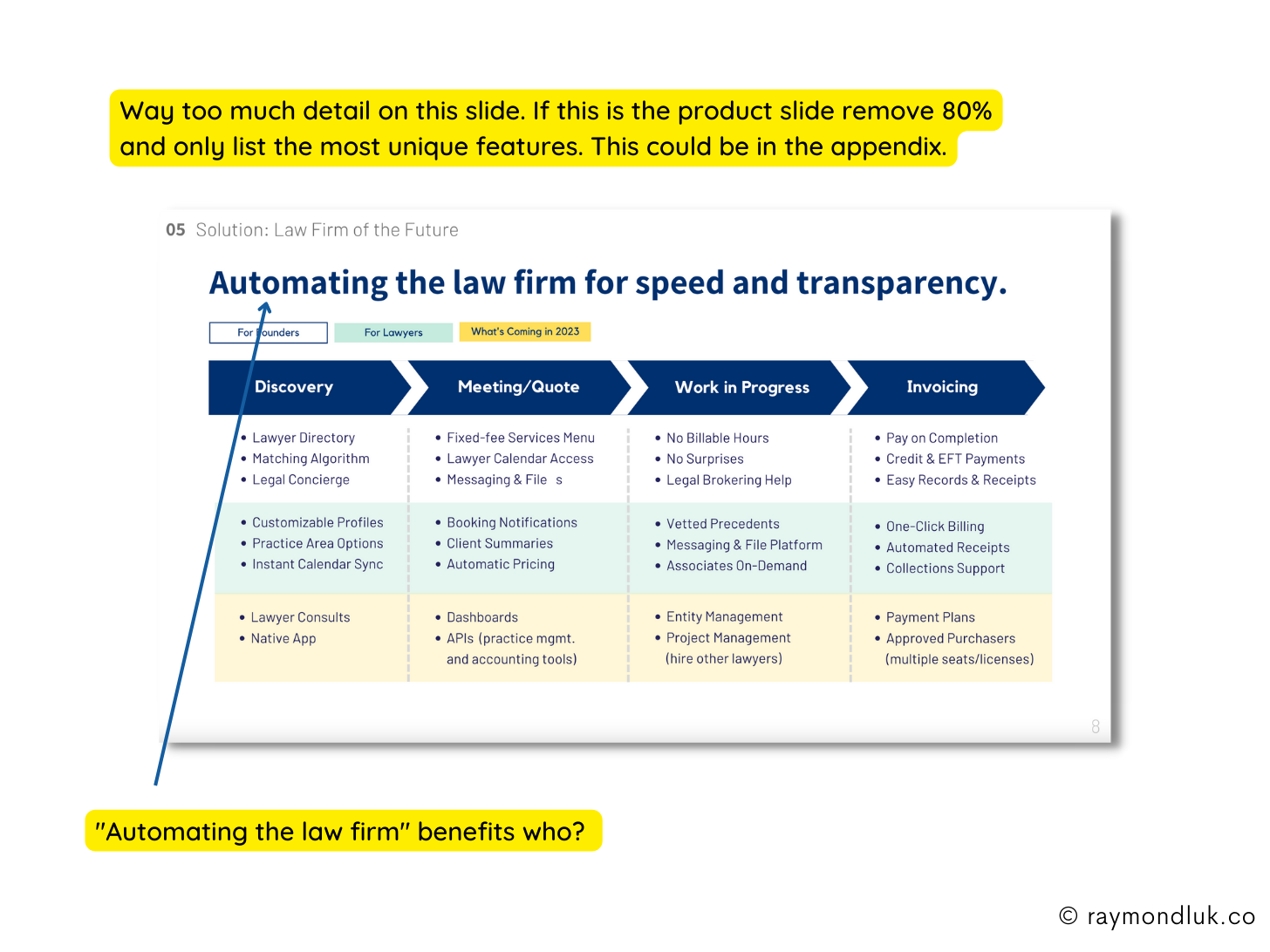
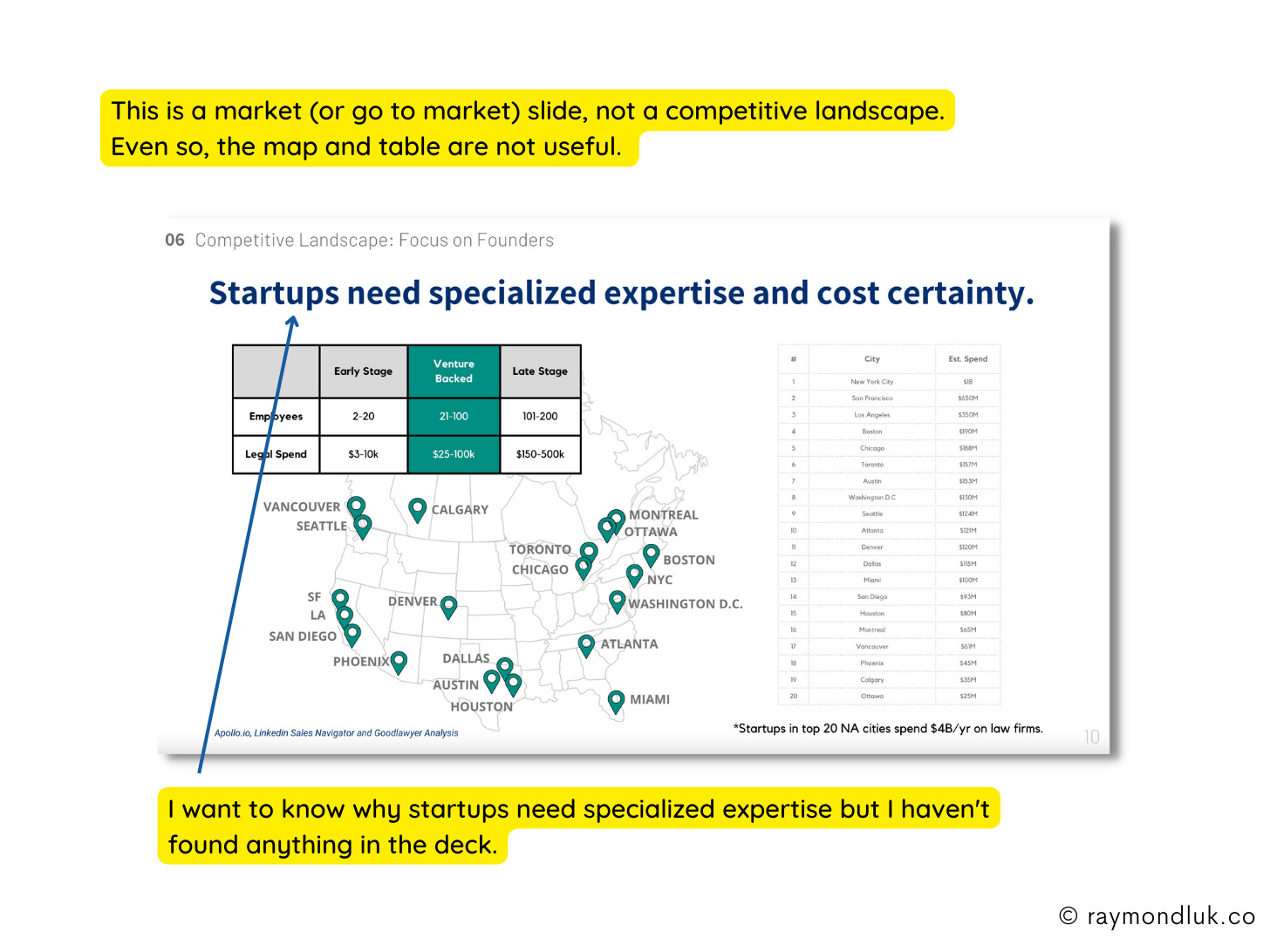
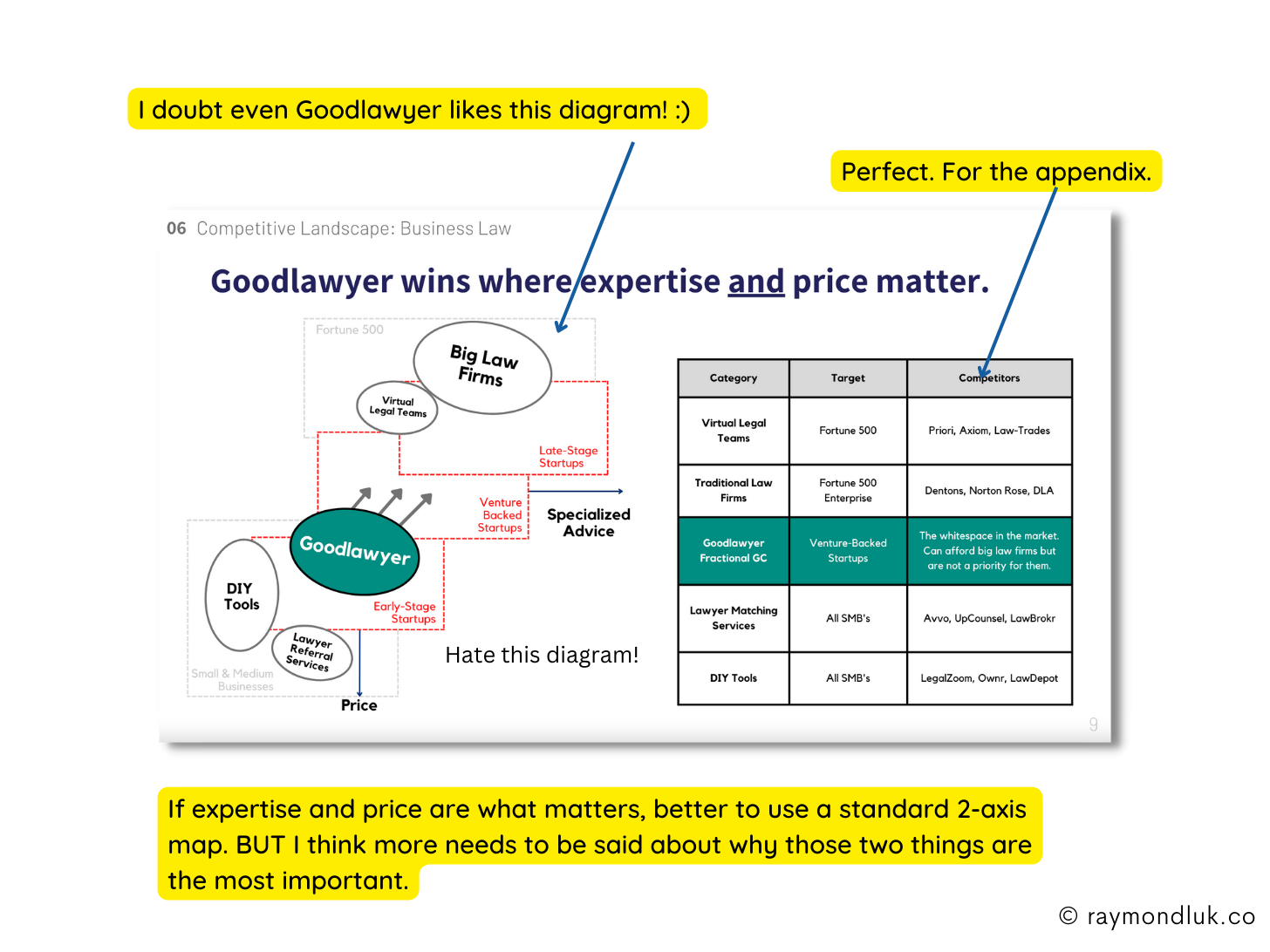
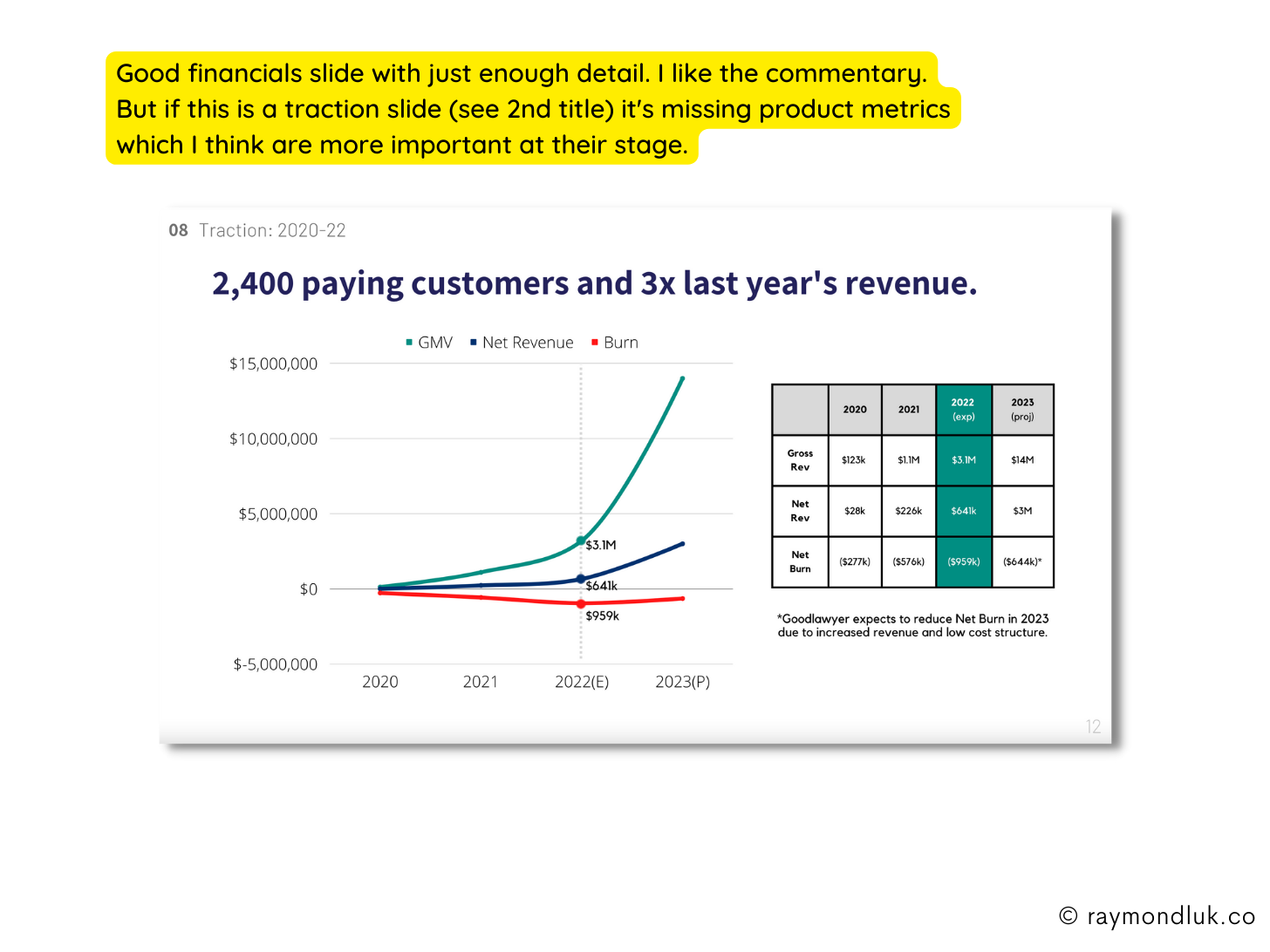
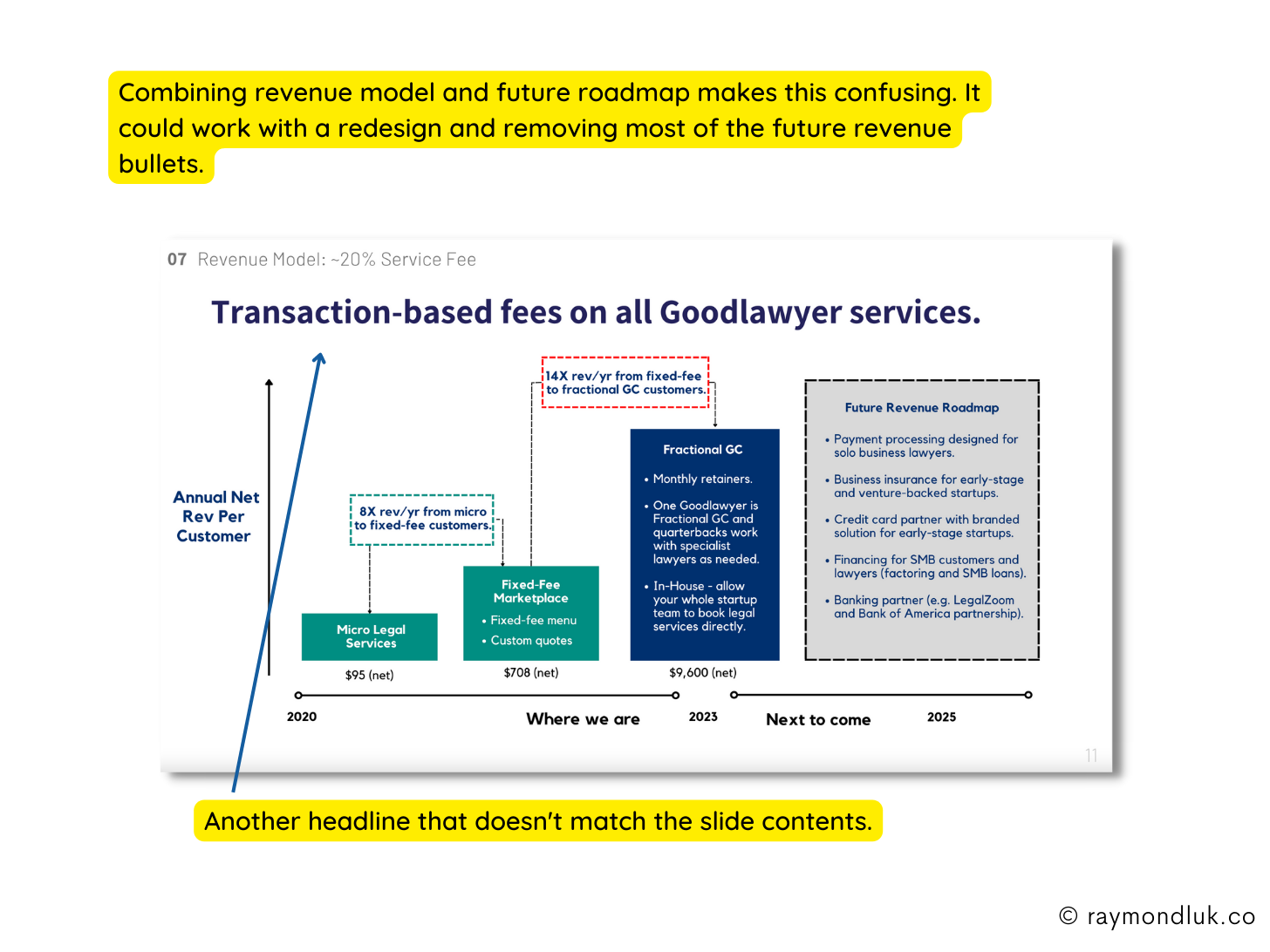
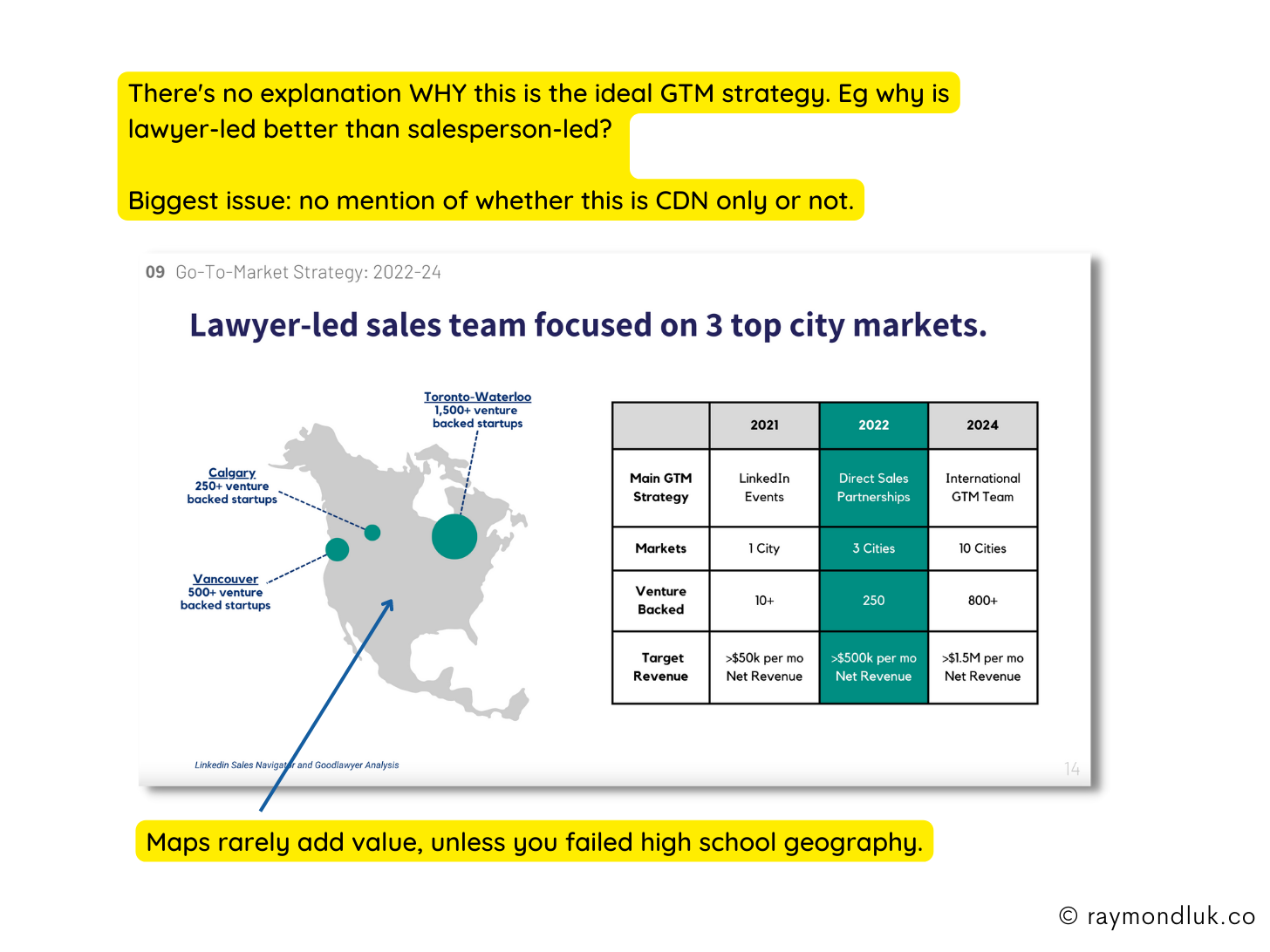
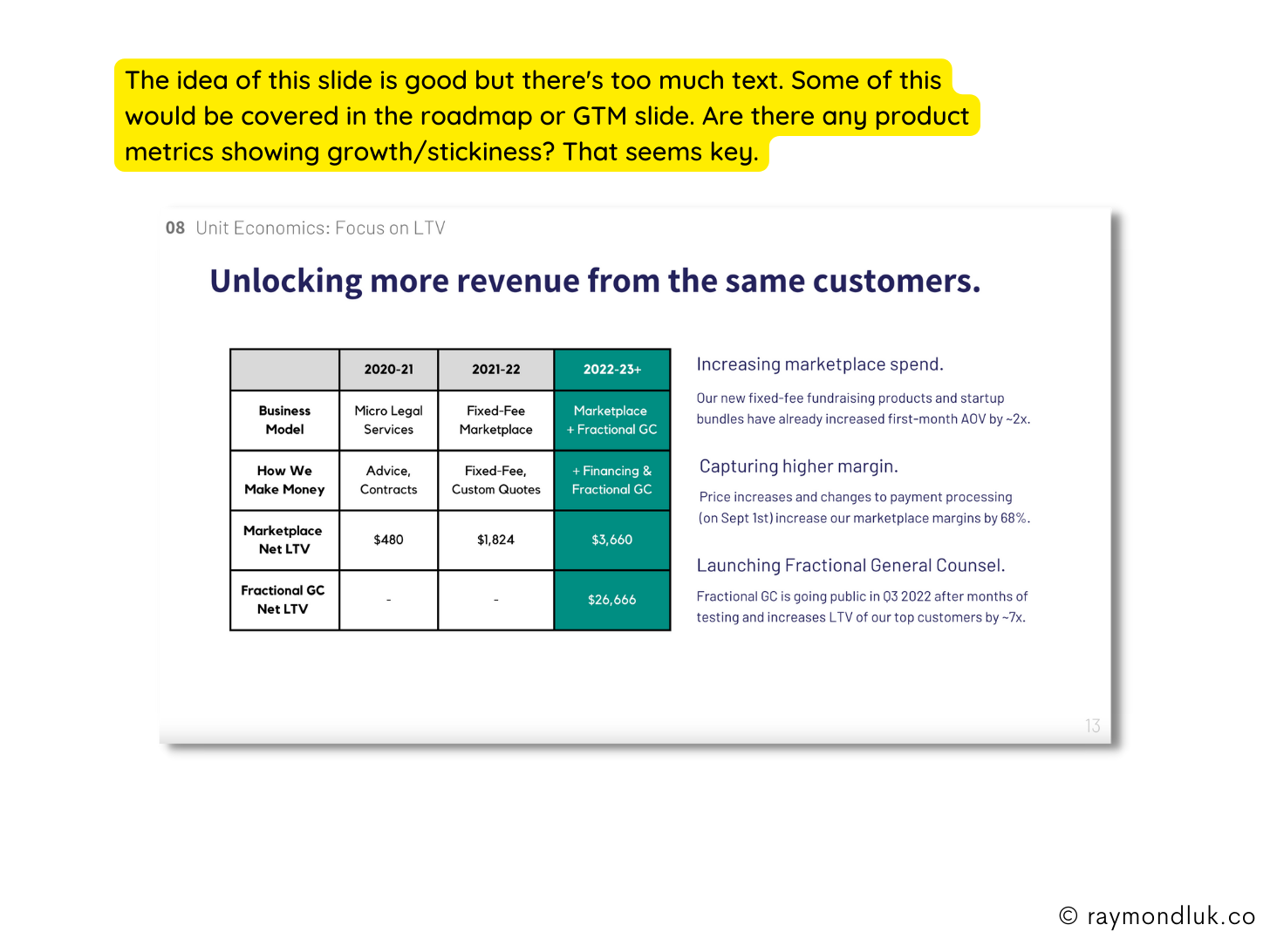
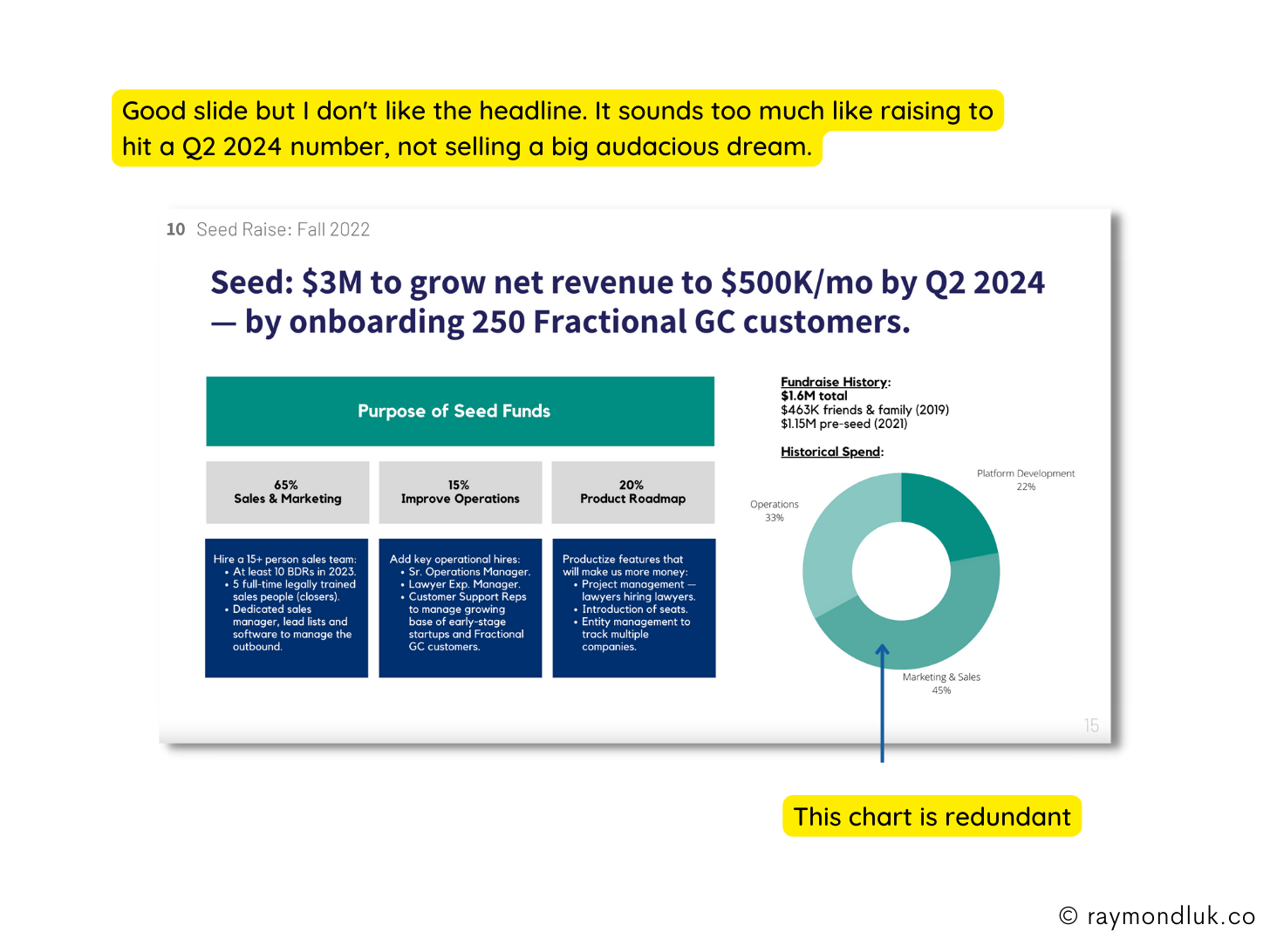
Final thoughts
My 1-line summary of the Goodlawyer pitch deck would be: a great vertical marketplace with huge potential that needs a more exciting story. Compared to many pitch decks I’ve seen, this was already better than average at the start.
Hopefully we’ve found ways to make it closer to extraordinary, which is always the goal.
Stay tuned for Pitch Deck Makeover where I’ll go head-to-head with Goodlawyer with my own version of their pitch deck.
If you want to be my next teardown:



